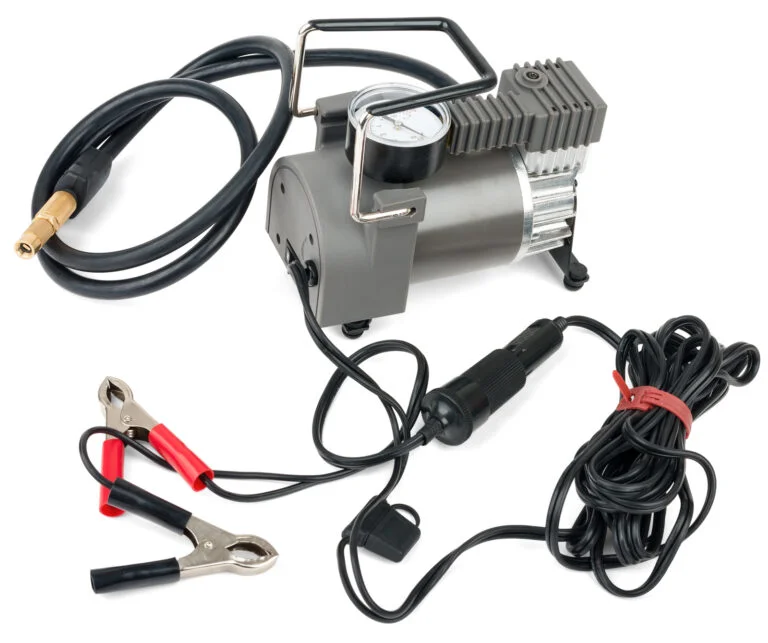Freeing Up Power: The Role of High-Flow Catalytic Converters
Unleashing the beast under the hood, high-flow catalytic converters are pivotal in enhancing vehicular performance. This article embarks on a technical exploration of these power-boosting devices. From their operating mechanism to environmental implications, we delve into what makes them superior to standard converters. Our detailed guide also covers their installation process and maintenance, ensuring your vehicle's potential is maximized. Strap in as we unravel the role of high-flow catalic converters in freeing up your vehicle's power.
Key Takeaways
- High-flow catalytic converters enhance engine performance by reducing back pressure and increasing exhaust flow.
- They are less efficient at pollutant reduction compared to standard converters due to their less restrictive cores.
- High-flow converters have a higher initial purchase price but often require less frequent maintenance and have a longer lifespan.
- Investing in high-flow catalytic converters can lead to cost savings, improved air quality, reduced carbon footprint, and contribute to environmental preservation and public health.
Understanding the Basics of Catalytic Converters
To comprehend the intricacies of high-flow catalytic converters, we must first delve into understanding the fundamental principles of catalytic converters. As a key component of any modern vehicle's exhaust system, the catalytic converter's function is to reduce the harmful emissions produced by the engine's combustion process.
A catalytic converter accomplishes this by facilitating chemical reactions that convert harmful gases into less harmful substances before they are released into the atmosphere. Specifically, it converts carbon monoxide into carbon dioxide, nitrogen oxides into nitrogen and oxygen, and hydrocarbons into carbon dioxide and water.
However, standard converters often restrict the flow of exhaust gases due to their dense honeycomb structure, limiting engine performance. This is where high-flow catalytic converters come in. These components are a popular exhaust system modification due to their less restrictive design, which allows for a higher volume of exhaust gases to flow through more freely.
Coupled with performance exhaust headers, high-flow converters can significantly enhance engine performance by reducing back pressure and increasing exhaust flow. This results in a more efficient engine and ultimately, a liberated driving experience. The focus is on achieving a balance between environmental responsibility and optimal vehicle performance.
The Mechanism Behind High-Flow Catalytic Converters
Within the framework of high-flow catalytic converters, the mechanism that allows for increased vehicular power involves a less restrictive structure that enhances the flow of exhaust gases. This enhancement is achieved by a design that features larger internal substrates, facilitating a superior exhaust flow rate.
Key components like high-flow air filters and cold air intake systems work in harmony with the high-flow catalytic converter. The high-flow air filters, due to their larger surface area, allow more air to enter the engine. This influx of air is then cooled by the cold air intake system, increasing its density and thereby the amount of oxygen available for combustion. This efficient combustion process leads to an increase in engine power output.
The intricate design of high-flow catalytic converters ensures a balance between emissions control and power liberation. They maintain the essential function of reducing harmful emissions while providing a more liberating driving experience through enhanced engine performance.
As we transition into the subsequent section, we will delve deeper into the comparison between high-flow and standard catalic converters, illuminating the advantages and potential drawbacks of each system.
Comparing High-Flow and Standard Catalytic Converters
In order to make an informed decision on whether to choose a high-flow catalytic converter over a standard one, several factors have to be considered. These factors include the performance differences, emission reduction efficiency, cost, and lifespan of both types of converters. A comprehensive comparison of these elements will provide a clear understanding of the benefits and potential drawbacks of each.
Performance Differences
Significant performance differences emerge when comparing high-flow catalytic converters to their standard counterparts, providing a deeper understanding of their respective efficiency levels. These disparities can be attributed to the design and construction of these devices, which directly influence their operational parameters.
- Exhaust Flow: High-flow converters are optimized for increased exhaust gas flow rate, reducing back pressure and enhancing engine performance.
- Pollutant Reduction: Both types ensure emissions compliance, but high-flow converters are less efficient at pollutant reduction due to less restrictive cores.
- Fuel Efficiency: With decreased back pressure, high-flow converters can potentially improve fuel efficiency.
- Durability: Standard converters typically have a longer lifespan due to their more robust construction.
Ultimately, the choice between a high-flow and standard catalytic converter should be determined by your specific performance and environmental needs.
Emission Reduction Efficiency
Through the lens of emission reduction efficiency, a comparative analysis between high-flow and standard catalytic converters reveals consequential differences in their abilities to mitigate harmful exhaust pollutants. High-flow catalytic converters, with their larger substrate diameters and less restrictive exhaust flow, have shown to be more efficient in reducing carbon monoxide, nitrogen oxides, and hydrocarbons. This efficiency stems from their enhanced ability to allow larger quantities of exhaust gases to pass through the converter at any given time, thereby providing more surface area for the catalytic reaction. Conversely, standard catalytic converters, while effective, may struggle with higher volumes of exhaust, thus reducing their overall emission reduction efficiency. The high-flow converters, therefore, present themselves as a more effective solution in the pursuit of emission reduction.
Cost and Lifespan
The financial and longevity aspects of both high-flow and standard catalytic converters present another critical area for comparison, offering insights into their cost-effectiveness over time.
- Initial Cost: High-flow converters typically command a higher initial purchase price than their standard counterparts due to their advanced technology and materials.
- Maintenance Cost: High-flow converters, however, often require less frequent maintenance, potentially saving owners considerable expense over time.
- Lifespan: High-flow converters generally boast a longer lifespan, providing more value for the initial investment.
- Resale Value: The resale value of a vehicle can be positively impacted by the presence of a high-flow converter, potentially offsetting some of the initial cost.
Understanding these factors may encourage consumers to consider the long-term benefits of investing in high-flow catalytic converters. Next, we explore the impact of high-flow catalytic converters on vehicle performance.
The Impact of High-Flow Catalytic Converters on Vehicle Performance
One cannot overlook the profound effect high-flow catalytic converters have on enhancing vehicle performance. These devices play a crucial role in exhaust emission control, reducing harmful pollutants to less detrimental gases. High-flow converters, in particular, have a larger capacity than standard models, allowing for greater quantities of exhaust gases to be processed, resulting in improved engine efficiency.
High-flow catalytic converters are designed to minimize the restrictions traditionally associated with catalytic converters. Their larger surface area and less dense substrate allow for more exhaust gases to flow through. This reduced backpressure enhances the engine's ability to aspirate, thereby improving its power output and fuel efficiency. This is particularly beneficial for high-powered vehicles where the engine produces a significant amount of exhaust gases.
The optimized design of high-flow catalytic converters liberates the engine's potential, allowing for a more responsive throttle and overall better driving experience. However, it's essential to note that the benefits may vary depending on the engine type and condition. Despite this variance, the positive impact of high-flow catalytic converters on vehicle performance is undeniable. The liberation of engine power and the subsequent improvements in performance are the primary reasons for their growing popularity among vehicle enthusiasts and experts alike.
Installation Process of High-Flow Catalytic Converters
Surprisingly, installing a high-flow catalytic converter is a straightforward process that can significantly enhance your vehicle's performance. This process involves a series of steps that require technical skill, attention to detail, and an understanding of your vehicle's exhaust system.
To install a high-flow catalytic converter:
- Remove the Old Converter: This is done by unscrewing the bolts that connect it to the exhaust system. Be careful to avoid damaging the oxygen sensors attached to the converter.
- Prepare the New Converter: Before installing the high-flow catalytic converter, inspect it for any damage or defects. Ensure it is compatible with your vehicle's make and model.
- Install the New Converter: Align the new converter with the exhaust system and securely fasten it using the provided bolts. Take care to position the oxygen sensors correctly.
- Test the Installation: Start your vehicle and listen for any unusual noises. If present, check the installation for loose connections or leaks.
Maintenance and Care for High-Flow Catalytic Converters
Beyond the installation, proper maintenance and care for high-flow catalytic converters is vital, and it can significantly extend the lifespan of the device and maintain peak performance. Regular inspections should be carried out to ensure the device has not been damaged or clogged by foreign substances. A visually apparent symptom of a malfunctioning converter is discoloration, typically resulting from overheating. This may be a sign that the device is not converting harmful gases efficiently, leading to an accumulation of heat.
It's essential to handle catalytic converters gently to avoid disrupting the ceramic honeycomb structure within, which is crucial for the conversion process. When the vehicle is in operation, avoid striking the undercarriage to prevent physical damage to the converter.
The exhaust system should regularly be checked for leaks, as these can reduce the efficiency of the converter and lead to increased emissions. For optimal performance, ensure that the engine is in good condition and running efficiently. A poorly maintained engine can result in unburned fuel entering the converter, which can cause overheating and damage.
Environmental Implications of Using High-Flow Catalytic Converters
As we examine the role of high-flow catalytic converters, it is critical to consider their environmental implications. These can be broken down into three key areas: the reduction of emissions, the impact on greenhouse gas levels, and the contribution to biodiversity conservation. Each of these factors plays a significant role in our understanding of the environmental benefits and potential hazards associated with the use of high-flow catalytic converters.
Emission Reduction Benefits
Undeniably, the use of high-flow catalytic converters plays a substantial role in reducing harmful emissions, thereby offering significant environmental benefits.
- Reduced Carbon Emissions: High-flow catalytic converters efficiently process exhaust gases, resulting in a lower carbon footprint.
- Improved Air Quality: By minimizing the release of harmful pollutants such as nitrogen oxides and hydrocarbons, these devices contribute to cleaner air.
- Conservation of Resources: The enhanced efficiency of high-flow catalytic converters means less fuel consumption, conserving natural resources.
- Health Benefits: By reducing airborne pollutants, these converters can lower the incidence of respiratory diseases linked to poor air quality.
In essence, the use of high-flow catalytic converters is an effective strategy for emission reduction, contributing significantly to environmental preservation and public health.
Greenhouse Gas Impact
The environmental implications of utilizing high-flow catalytic converters extend to their substantial effect on greenhouse gas emissions. These devices, through their catalytic process, play a pivotal role in reducing harmful pollutants such as nitrogen oxides, carbon monoxide, and hydrocarbons. However, their impact on carbon dioxide (CO2) emissions, a significant greenhouse gas, is indirect. High-flow catalytic converters enhance engine efficiency, leading to improved fuel consumption. This decrease in fuel use consequently results in less CO2 being emitted. Hence, while not directly tackling CO2, the use of high-flow catalytic converters contributes to diminishing the overall greenhouse gas footprint of vehicles. Embracing these technologies is therefore a step towards environmental responsibility and sustainable driving practices.
Biodiversity Conservation Contribution
Beyond their role in reducing greenhouse gas emissions, high-flow catalytic converters also contribute to biodiversity conservation, and this is largely attributable to their ability to reduce harmful vehicle emissions.
- Air quality improvement: These converters decrease the level of toxic pollutants discharged into the environment, thereby improving air quality and creating a healthier habitat for various species.
- Ecosystem preservation: By reducing harmful emissions, they help maintain the balance of ecosystems, which are often disrupted by pollution.
- Climate change mitigation: They aid in the fight against climate change, which is a significant threat to biodiversity.
- Preserving species diversity: By preserving ecosystems and combating climate change, they indirectly contribute to the conservation of numerous species, fostering a rich biodiversity.
Embracing these converters can help us move towards a more sustainable and biodiverse planet.
Frequently Asked Questions
What Is the Average Cost of a High-Flow Catalytic Converter?
The average cost of a high-flow catalytic converter varies greatly depending on the vehicle model and brand. Generally, it ranges from $100 to $800, with labor costs adding an additional $150 to $200.
Are There Specific Brands or Manufacturers Known for Producing High-Quality High-Flow Catalytic Converters?
Yes, there are specific brands recognized for their superior high-flow catalytic converters. Notably, MagnaFlow and Flowmaster are renowned for their performance, durability, and commitment to environmental responsibility in their products.
Can the Use of a High-Flow Catalytic Converter Void My Vehicle's Warranty?
The use of a high-flow catalytic converter can potentially void your vehicle's warranty. It's crucial to check with your specific manufacturer or warranty provider to understand any possible implications before making modifications.
Are High-Flow Catalytic Converters Legal in All States and Countries?
High-flow catalytic converters legality varies globally. For instance, in California, USA, stringent emissions standards may prohibit their use. It's essential to verify local regulations before installing to ensure compliance and avoid potential legal repercussions.
What Potential Issues or Problems Might Arise From Using a High-Flow Catalytic Converter?
Potential issues with using high-flow catalytic converters include increased emission of harmful pollutants, potential legal implications in certain jurisdictions, and possible damage to the vehicle's engine due to changes in exhaust backpressure.
Conclusion
In conclusion, high-flow catalytic converters play a pivotal role in boosting vehicle performance by enhancing exhaust gas flow, similar to how a river's current increases when a dam is removed. They demand careful installation and maintenance, but their environmental implications are to be noted. Striking a balance between power optimization and environmental responsibility is thus crucial in the utilization of these advanced automotive technologies.







